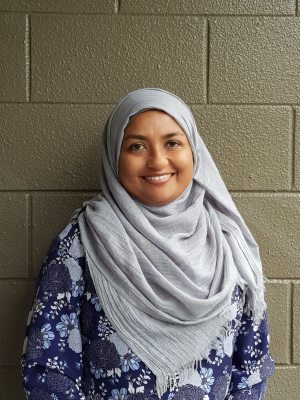Learning From Conflict: Building Understanding Through Respectful Dialogue
As the world stage is currently dominated by deeply divisive and distressing issues of conflict, war, oppression, and genocide, many educators are grappling with how to maintain an inclusive learning environment while using global events to build awareness and critical consciousness. Some teachers may feel it is best to avoid talking about it altogether. But rather than be the ostrich who buries its head in the sand, it is important that teachers create safe spaces in the classroom for students to address controversial issues and build understanding as they navigate the complexities of a conflict.
Teachers have a crucial role to play in helping students develop the skills of engaging in respectful dialogue around sensitive topics. The goal of fostering such conversations is not to change individual minds, or to reach consensus on an issue. The goal is to simply develop students’ ability to civilly discuss difficult topics where individuals may have a variety of views. Through presenting multiple perspectives, students may develop greater clarity on the issue and come to realise that something that they had assumed to be black and white may actually be more complex and nuanced than they had previously thought. Here are some suggestions when bringing contentious issues into the classroom to develop critical thinking:
- Maintain self-awareness: Be mindful of your stance on the issue, and your own ability to remain calm when other people say things you dislike. Try to put yourself in your students’ shoes, and think about how much more difficult they will find it to stay composed when they are less mature than you, and perhaps, more personally invested in an issue.
- Know your learners well. The topic needs to be developmentally appropriate for the students. Decide on whether they have had enough practice engaging in charged discussions, gradually building up their capacity for heated debates before bringing in divisive issues.
- Give notice. Consider giving students advance notice that you will be discussing the issue in an upcoming lesson. Knowing something about your students' background knowledge beforehand can help you to prepare better and be aware of possible triggers students may have.
You may choose to use the opportunity to preview students’ views and any personal connections to the issue by posing questions in an exit ticket, such as:
-
- What do you know about the ongoing war?
- What questions do you have?
- How have you been affected?
-
- Establish rules. Every classroom should have established rules about engaging in dialogue. Students should be involved in creating a contract that honours critical dialogue and reflective learning. This will help ensure that students feel safe to be who they are and to say what they honestly think, while being respectful to others.
- Practice transparency. Communicate clearly to students, administrators, and parents about your rationale for teaching a particular issue and explain how you are approaching it. When communication remains open and there is transparency about pedagogical intentions, people are less likely to feel threatened or jump to conclusions.
- Consider the format of the discussion. Depending on your students and the chosen topic, you may decide on holding a classroom deliberation or a town hall circle, or other discussion strategy. Let’s Talk!, a guide developed by U.S.-based antibias programme Teaching Tolerance, offers classroom-ready strategies teachers can use to facilitate critical conversations with students around issues such as racism, inequality, and discrimination. For example, it suggests strategies to discuss strong emotions and how teachers can navigate a polarized classroom.
- Educate yourself. Use unbiased resources to build student understanding. For example, Solutions not Sides is a nonpartisan educational programme based in the United Kingdom that has excellent learning resources that can be used in class or by students learning independently. They focus on humanizing conflicts to help young people understand and embrace the complexity of the problem and empower them toward seeking solutions.
- Address disinformation through critical literacy. Both mainstream and social media are rife with misinformation and disinformation. While both refer to false information that is spread, the difference lies in the intent. Misinformation refers to false information, regardless of whether there is intent to mislead, while disinformation is false information that is disseminated with the purpose of deceiving. Teachers should foster a culture of questioning in the classroom and developing the skills of critical literacy with online and offline media. Students need to learn how to identify and cope with “fake news” and as well as how to reframe racist narratives through counter storytelling.
In closing, I will lean on Ghosh and Galczynski’s reminder that education is not a neutral act, and that it is indeed political.
Teaching is not an isolated act detached from social obligations. Teachers must help students ‘connect’ their lives with the larger world, develop conceptual schemes, and not merely accumulate information” (p. 172).
When the world is embroiled in conflict, teachers must capitalize on teachable moments, develop students’ critical consciousness, and prepare them for democratic participation in society.

